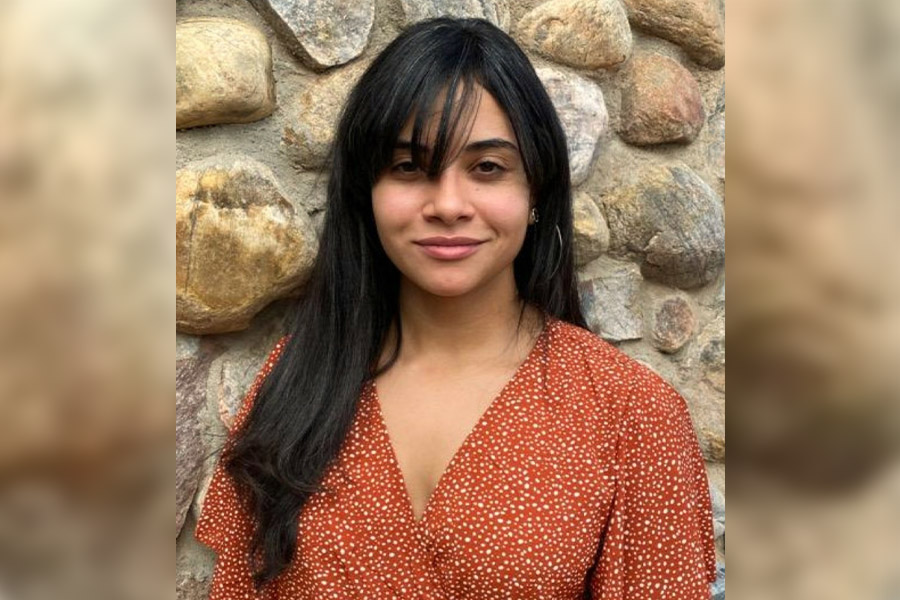Student Spotlight: Dorianis Perez

Dorianis Perez is a first-generation college student pursuing a Ph.D. in computational science at Florida State University’s Department of Scientific Computing, part of the College of Arts and Sciences. Her concentration is held in the Fire Dynamics Program through the Geophysical Fluid Dynamics Institute with her research involving the simulation of major wildland fire events to further understand the parameters and physical variables that play a role in their inception and development. Before coming to FSU, Perez earned her Bachelor of Science at Hofstra University in 2016 and her Master of Science at Mercyhurst University in 2018. Now, at FSU she specifically investigates cloud microphysics, the microstructure of clouds that form above wildfires, how these clouds can further develop into severe thunderstorms with lightning that may ignite more fires, and vorticity dynamics in fire behavior itself.
What year are you in school, and when do you expect to graduate?
I’m a fifth year Ph.D. candidate, and I’m expecting to graduate in Fall 2023.
Tell us a little about your background, where you’re from, and what made you choose FSU.
I was born and raised in Long Island, N.Y., by Dominican immigrants. I’m a first-generation college student and the first in my family to pursue a doctorate. What drew me to FSU was the diversity of the university and the interdisciplinary nature of the Department of Scientific Computing, since I already have degrees in forensic science, mathematics and forensic anthropology. I was looking for a program where I could develop new skills, like programming and scientific computing, and use my broad knowledge base at the same time.
What inspired you to pursue your degree in wildland fire and cloud modeling? Did you always want to pursue this field?
When I first came across the fire dynamics program at Florida State, I was finishing my master’s degree in forensic anthropology. Until then, my only first-hand experience with fire had been in the context of those who had fallen victim to structural fires and explosions, more so in an anatomical and pathological context. When I realized that wildland fire research exists, and that I can explore the bigger picture of understanding the physical dynamics and use computers to do so, I became extremely fascinated.
During my literature review at the beginning of the program, the phenomenon that was most shocking to me was that of pyrocumulonimbus clouds and how they develop and affect fire behavior. These clouds are wildfire-driven thunderstorms that form when an intensely heated plume feeds smoke and particles into the atmosphere, eventually forming a cloud that can produce precipitation and lightning, further exacerbating the fire. Cloud microphysics play a major role in these, and thus my interest in cloud modeling was born. I didn’t always know that I would wind up where I am today, but the progression of my studies combined with the development of my interests has led me to researching wildfires and cloud microphysics.
Who are the faculty or staff members that have helped or inspired you?
The faculty members that have helped me the most are Kevin Speer, the director of GFDI, Bryan Quaife, an associate professor in scientific computing and a faculty associate of GFDI, and Neda Yaghoobian, an assistant professor and faculty associate of GFDI, all of whom are also a part of the Fire Dynamics research group.
Tell us about your research experiences and what it is like being an assistant.
I started at GFDI as a research assistant. I worked on a project with a cohort member and was able to present results during my first semester at the American Geophysical Union annual meeting in 2018. After my first year, I participated in the Computational Physics Workshop at Los Alamos National Laboratory, or LANL, for the summer where I worked with Jesse Canfield, who graduated from the FSU Geophysical Fluid Dynamics Ph.D. program before it transitioned into GFDI, as my mentor. I developed a project on the numerical integration of non-functions for simulating Rayleigh-Taylor instabilities, the instability that forms at an interface between two fluids of different densities. We simulate them by solving the equations that describe them on computers.
I enjoyed my experience at LANL so much that I came back to FSU, took my qualifying exam and immediately returned to LANL to complete my dissertation research full-time as a graduate research assistant in their continuum models and numerical methods group. At LANL, I’m involved in two projects that allow me to learn and become exposed to two different areas of wildfire research. One of the projects is based on simulating pyrocumulonimbus cloud microphysics, and the other is focused on understanding the role of vorticity in wildfire behavior.
How has your role as a student researcher helped prepare you for academic and professional success? Where do you anticipate your research will lead you in your career?
My role as a student researcher has allowed me the opportunity to practice becoming an independent researcher and understand how to effectively go through the scientific method and process. Working at LANL has opened the door for so many opportunities as I seek professional success. I anticipate that my current role will lead me to a postdoctoral research position at LANL or another national laboratory that can propel me into a career in industry.
What do you like to do when you’re not doing schoolwork or research?
I love spending time with my cats, traveling, hiking all over New Mexico, and have recently started training for my first half marathon!
Although you might miss FSU, what are you looking forward to after you earn your Ph.D.?
I’m mostly looking forward to being able to spend more time with my family and getting a dog!

